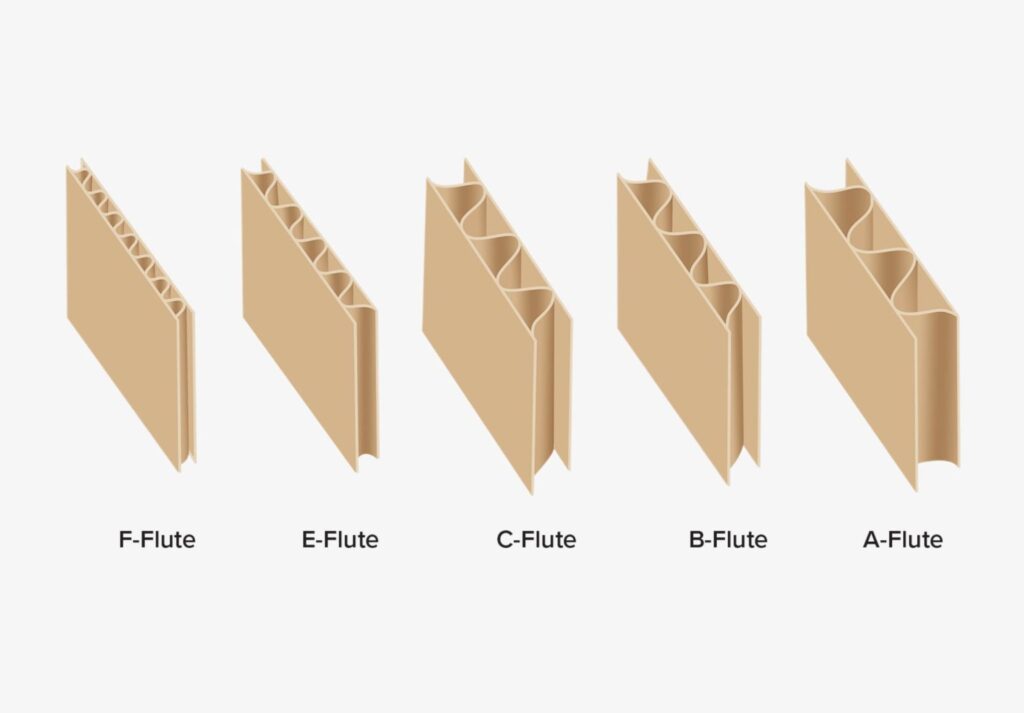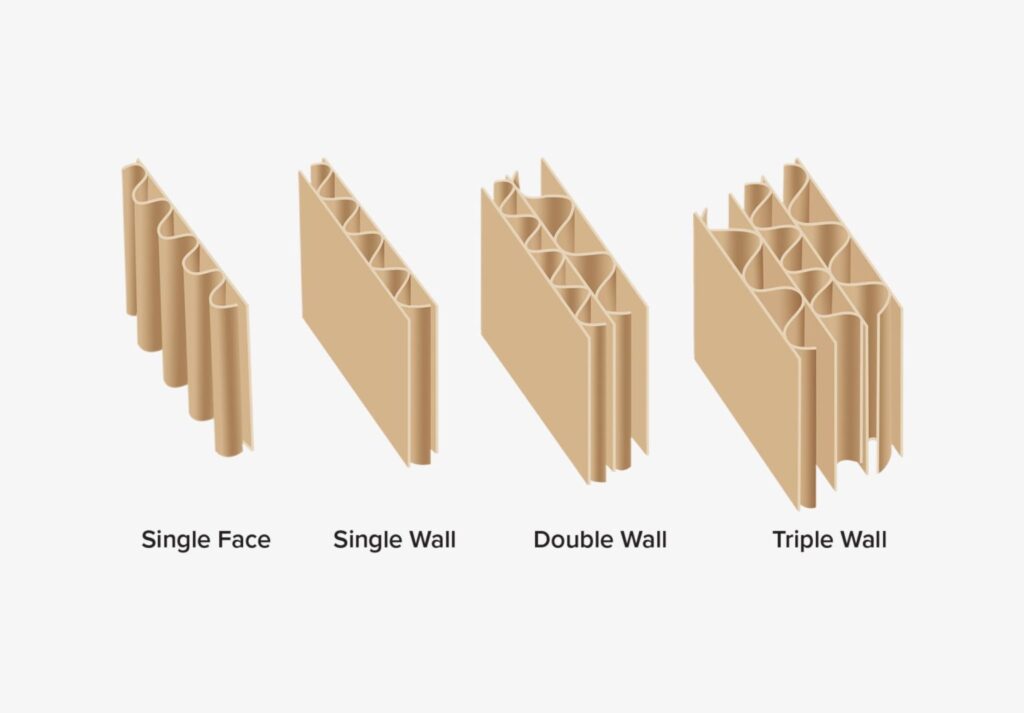1: Corrugated Box Basics
2: Corrugated Box Styles
3: Types of Corrugated Cardboard
Corrugated cardboard comes in different types, such as single-face, single-wall, double-wall, and triple-wall, each offering varying degrees of protection. The choice depends on the weight of the product and the level of protection needed.
Corrugated flute is similar to liner boards save for the construction.
Corrugated flute provides cushioning, strength, and compression-resistant qualities to your package depending on the different grades, allowing for even more customization with your packaging. But before we examine each flute grade in detail, look at our corrugated flute chart for a quick visual comparison:
 A-Flute – 1/4” is the first type of corrugated flute. This flute grade has the highest protection and cushion qualities. It is very good at handling compression and stacking and is often used for packaging fragile items.
A-Flute – 1/4” is the first type of corrugated flute. This flute grade has the highest protection and cushion qualities. It is very good at handling compression and stacking and is often used for packaging fragile items.
B-Flute – 1/8”. This flute appears much thinner than others but is still quite strong, with excellent puncture and crush resistance. B-flute has outstanding all-around performance for various packaging or as additional material for padding and dividing. It even has a flatter surface for higher-quality printing and easy die-cutting.
C-Flute – 3/16” is flexible and one of the corrugated boxes’ most versatile flute grades. It has average crush resistance, stacking strength, and printing properties. You have likely seen C-Flute used for shipping boxes but also for packaging glass, dairy, and furniture products.
E-Flute – 1/16” is not typically used for shipping. E-flute thickness is on the thinner side of flute grades, so it is often used as an alternative for paperboard folding cartons. However, you may still use E-Flute for cosmetics, fragile glass, ceramics, and other small and delicate products. E-Flute has excellent compression strength, crush resistance, and a relatively flat surface for high-quality printing applications.
F-Flute – 1/32” has protective qualities similar to E-Flute but with an even smoother surface for high-quality printing. It is common for you to use F-Flute for clamshell packaging in the US fast-food industry, but in Europe, this grade of corrugated fluting is a standard option for specialty and retail packaging.
4.Corrugated Cardboard Thickness
Now that we’ve covered the different types of paper liners and flute grades, it’s time to look at thickness! Below is a summary of the standard thickness options available:
Liner Board – The ‘face’ of the fiberboard sheet. You glue the flute onto this board.
Single Face – Consists of one liner board with glued flute visible on one side.
Single Wall – The most common thickness. Two liner boards with fluted fiberboard glued in between.
Double Wall – Three sheets of liner board and two fluted fiberboards in between.
Triple Wall – Four sheets of liner board and three fluted fiberboards in between. This option can withstand heavier weights up to almost 300 lbs but is less flexible.

Examining a little further with double and triple walls, different combinations of flute grades are possible with these options. Some industry standard combinations include:
AC Flute – A mix of the two most protective corrugated grades. AC Flute is excellent if you need extra protection for harsh shipping and handling processes.
BC Flute – An outstanding all-around performer, this combination provides high-level transit protection and is common for shipping boxes.
EB Flute – Provides superior transit strength and safety, while the outer E-Flute allows for an excellent, high-quality printing surface.
